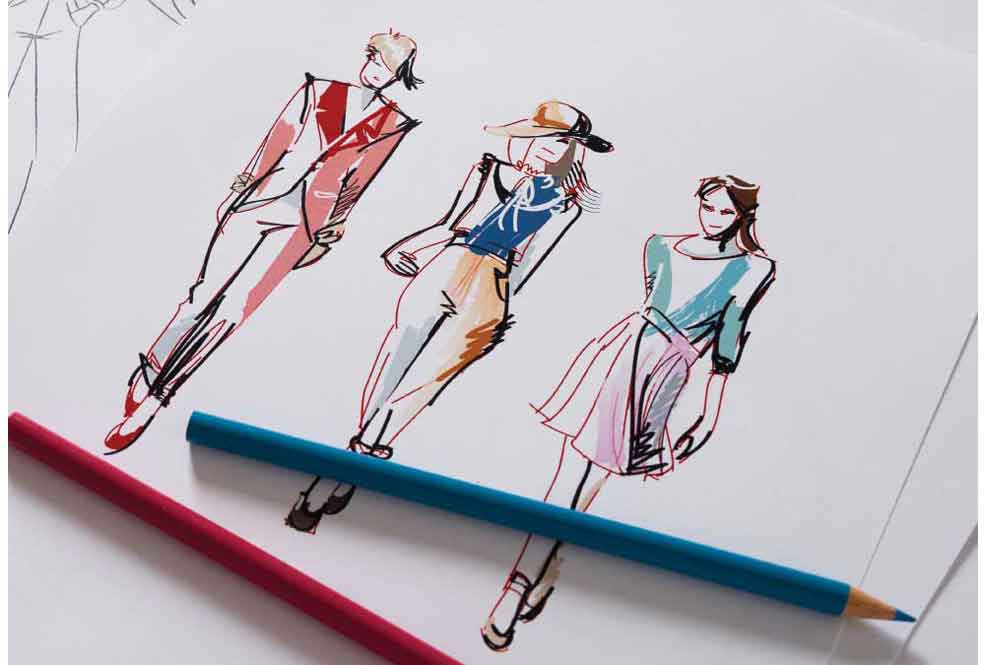
Table of Contents
ToggleWhat is Fashion Design?
Fashion design is the art and practice of creating clothing, accessories, and footwear that is both functional and aesthetically appealing. Fashion designers blend creativity with technical knowledge, using different materials, patterns, and techniques to create garments that can be worn in everyday life or on special occasions. Fashion design is also heavily influenced by cultural trends, social movements, and historical events, which give designers the freedom to push boundaries and challenge conventions.
The Fashion Design Process
Creating a fashion collection is an intricate and multi-step process. It involves inspiration, sketching, fabric selection, garment construction, and often, a final runway presentation. Here’s an overview of the typical fashionstype.com process:
Research and Inspiration:
The first step for any designer is to gather inspiration, which can come from anywhere: nature, art, music, history, or personal experiences. Designers often look for ideas in various sources such as magazines, travel, and social media. This stage is about exploring different themes and concepts that can shape the overall direction of the collection.
Designers also study trends and consumer needs, looking at what’s popular or emerging in the fashion world.
Sketching and Concept Development:
Once a designer has gathered their inspiration, they begin to sketch out their ideas. These initial sketches can be rough drawings or more detailed designs, depending on the designer’s style and preference.
Designers work through different variations of shapes, silhouettes, and garment constructions at this stage. It’s important to think about how the design will fit the body and complement the intended wearer’s lifestyle.
Fabric Selection:
The choice of fabric is one of the most important aspects of fashion design. Designers select fabrics based on the desired look, texture, and functionality of the garment. Fabrics range from luxurious silks and velvets to practical cottons and wools.
Fabrics also determine how a design will drape, move, and wear, and they play a significant role in determining the garment’s overall aesthetic.
Pattern Making and Prototyping:
Once the designer has settled on a sketch and fabric, they move on to pattern making. A pattern is the blueprint of the garment, made by tracing out pieces of fabric to create the full design. These patterns are cut and sewn to form a prototype, also known as a “muslin” or sample garment.
The prototype is often adjusted and tweaked until it fits perfectly and embodies the vision of the designer.
Sewing and Construction:
After perfecting the prototype, the design is brought to life through sewing and construction. Designers may work with seamstresses or production teams to ensure that the garments are sewn to perfection. The construction stage is where the designer’s concept truly takes form, and attention to detail is key.
Fittings and Adjustments:
Fittings are an essential part of the process, especially if the design is a custom piece. The designer or team will fit the garment on a model to make sure it fits properly, moves comfortably, and looks the way it was intended. Adjustments are made to ensure the garment fits the intended shape and size.
Final Presentation:
The final step in the fashion design process is the runway show or collection presentation. Designers showcase their creations to the public, often during fashion weeks, where they reveal their new collections to an audience of buyers, influencers, critics, and fashion enthusiasts.
These presentations serve as both a marketing tool and an artistic display, allowing designers to make a statement about their vision and capture the attention of the fashion world.
Key Elements of Fashion Design
Fashion design is an intricate art that relies on a blend of creativity, technique, and a solid understanding of various principles. Below are some of the essential elements that designers consider when creating a fashion piece:
1. Silhouette
The silhouette refers to the overall shape or outline of the garment. It defines how the garment fits the body, such as whether it’s body-hugging, loose, or flared. Silhouettes can range from sleek and structured to voluminous and flowing, depending on the designer’s vision.
2. Color
Color plays a vital role in fashion design. Designers often choose color palettes that align with their inspiration and the season in which their collection is to be released. Colors can evoke specific emotions or set the tone of the design. Bold and vibrant colors may suggest energy, while pastels convey softness and elegance.
3. Fabric and Texture
The choice of fabric greatly influences how a garment feels, moves, and looks. Fabrics can have different textures—smooth, rough, shiny, matte—that add dimension and depth to the design. Designers often select materials based on the desired look and feel of the garment, balancing comfort, movement, and aesthetics.
4. Line
Lines define the shape and structure of a design. They can be used to elongate the body, create curves, or add interest. Vertical lines can create a sense of height, while horizontal lines add width. Diagonal and curved lines can create a sense of motion or softness.
5. Proportion
Proportion refers to how different elements of a garment relate to each other in terms of size. The balance between the top and bottom of a design, sleeve length, and fit are all part of proportion. Designers must ensure that the proportions of a garment flatter the body and maintain a balanced look.
6. Details and Embellishments
Small details and embellishments, such as buttons, zippers, embroidery, lace, and beads, can elevate a design. These elements add uniqueness and charm, giving garments a sense of personality and sophistication.
7. Functionality
While fashion design is about creativity and style, functionality is also essential. A garment must be wearable, comfortable, and fit for purpose. Designers must consider the practical aspects of the clothing, including durability, ease of movement, and comfort.
Becoming a Fashion Designer
For those interested in becoming a fashion designer, there are several key steps and skills required:
Education and Training:
Most fashion designers pursue formal education through fashion design schools or universities. A degree or certification in fashion design equips aspiring designers with essential skills in sketching, pattern making, fabric selection, and garment construction.
Building a Portfolio:
A strong portfolio showcasing a designer’s best work is crucial for entering the fashion industry. The portfolio should demonstrate creativity, technique, and an understanding of design principles.
Internships and Experience:
Gaining hands-on experience through internships or working with established designers is invaluable for learning industry practices and building a network. Interns learn how fashion houses operate, how collections are created, and the logistics of fashion production.
Staying Updated:
Fashion is a fast-moving industry, and staying updated with trends, new materials, and innovations is key to remaining relevant. Designers must continuously evolve their craft and embrace new techniques and technologies.
Conclusion
Fashion design is a captivating and dynamic field that allows designers to express their creativity, push boundaries, and transform ideas into wearable art. Whether it’s creating haute couture collections or everyday fashion, designers play a significant role in shaping the global fashion landscape. For anyone with a passion for design, an eye for detail, and a drive to innovate, fashion design offers endless opportunities to create, inspire, and influence the world of style.




